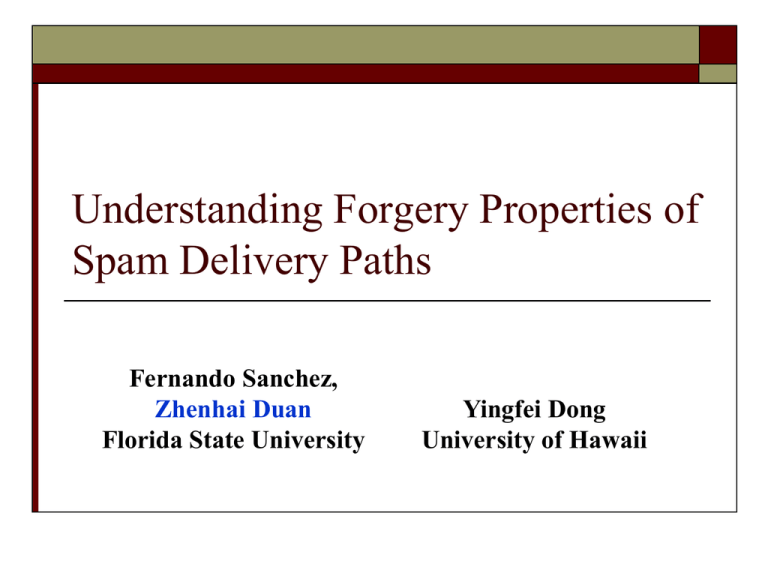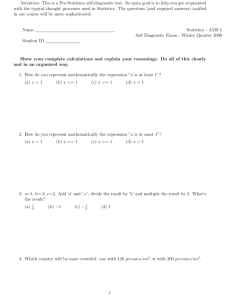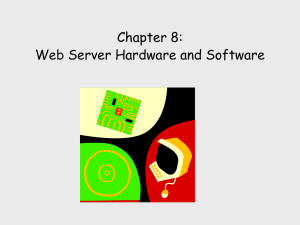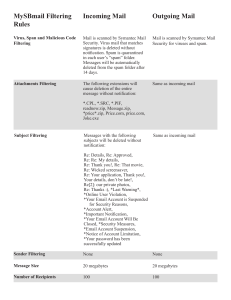Understanding Forgery Properties of Spam Delivery Paths Fernando Sanchez, Yingfei Dong
advertisement

Understanding Forgery Properties of Spam Delivery Paths Fernando Sanchez, Zhenhai Duan Florida State University Yingfei Dong University of Hawaii Problem Statement Email header forgery But to what degree and how well they do it? Why this is important? Investigating email-based crimes such as phishing and threats Email sender accountability Spam control Focus of this study Received: header fields Sequence of servers in Received: fields shows (claimed) spam delivery path 2 Outline Background on Received: header fields Data set and methodology Results and implications of this study Summary and future work 3 Received: Header Fields Prepended by each mail server into email header Received: from xhtuah.vsahd.com (ppp89-110-22-1.pppoe.avangarddsl.ru [89.110.22.1]) by mail.cs.umn.edu (Postfix) with SMTP id 9C6714DE89 From-from: xhtuah.vsahd.com From-address: 89.110.22.1 From-domain: ppp89-110-22-1.pppoe.avangarddsl.ru By-domain: mail.cs.umn.edu 4 Data Sets Two complementary data sets 3 year spam archive MX records of about 1.2M network domains Interpret and confirm findings from first data set Spam archive Untroubled.org spam archive 2007 – 2009, totaling about 1.84M spam messages Bait addresses and domains obtained from Delivered-To: field 5 Data Set: MX Records MX records of about 1.2M network domains Domains extracted from 15 day email trace Collected on FSU campus network in 2008 Sender’s envelope email addresses (MAIL FROM) About 53M msgs, about 47M or 88.7% are spam Representative of the domains 247 top-level domain (TLD) Containing all major email service providers 6 Methodology Length of spam delivery paths Different internal mail server structures of recipient’s domain First external and internal MTA servers MX of untroubled.org mx.futureequest.net 7 Spam Delivery Paths Raw path From (claimed) origin to first internal MTA server (inclusive) Network-level consistent (NLC) path R: from fi by bi R: from fi-1 by bi-1 fi and bi-1 belong to the same network Same /16 network prefix Same domain name 8 MX Dataset Analyses Two types of mail servers Load balancing servers: servers within same domain fsu.edu has 11 mail servers all in fsu.edu Backup servers: servers in different domains Bemac.com mail servers in two domains: bemac.com and psi.net Total number of mail servers in each domain Total number of mail server clusters in each domain Group all mail servers in one domain into a cluster fsu.edu only has one mail server cluster bemac.com has two mail server clusters 9 Results: Spam Delivery Paths Average length of raw paths 2007: 2.57, 2008, 2009: 2.34 Pattern of inconsistency Confused from-domain and by-domain R: from A by B R: from A by C Pretending to be already received by recipient’s domain D R: from A by B R: from C by D 10 Spam Source Network-Level Distribution Consistent with previous study based on FSU email trace To a degree, indicating representativeness of spam archive 11 MX Records 57% of domains have one mail server 90% of domains have one mail server cluster Emails should be directly delivered to recipient mail servers Helps shorten email delivery path 12 Email Delivery Model Borrowing idea of AS relationship in BGP routing A mail server on email delivery path must be a provider of either sender domain or receiver domain (ignoring open-relays) Forged mail server Email delivery path of normal messages should be of 3 hops 13 Name Structure of Mail Servers Extracting local name from domain name of mail servers 14 Naming Structure of First External MTA Servers a-b-c-d: e.g. 83-131-12-156.adsl.net.t-com.hr xyz-a-b-c-d: e.g. oh-71-50-221-149.dyn.embarqhsd.net a.b.c.d: e.g. 154.88.218.87.dynamic.jazztel.es 15 Implications Sender authentication schemes Many spam traversed two hops, likely sent from spamming bot SPF-like can be of great help Hard to fake a compromised machine as a legitimate server Majority emails sent directly from sender to receiver domain DKIM-like really needed? Spam control Detecting forged trace records Email delivery path length Mail servers vs. end-user machines Helps detect forged Received: (if end-user machine appears in middle of delivery path) Common naming structure of mail servers? 16 Summary and Future Work Empirical study on trace record structure of spam messages Implications on various spam control efforts Based on two complementary data sets Majority spam delivery paths are short, without any attempts to fake We can detect a large part of forged trace records, even if they do so Sender authentication schemes Spam control Value of Received: header fields in detecting spam Future Work Detailed study on patterns of inconsistent spam delivery paths Larger and more diverse spam archives Non-spam email traces 17




